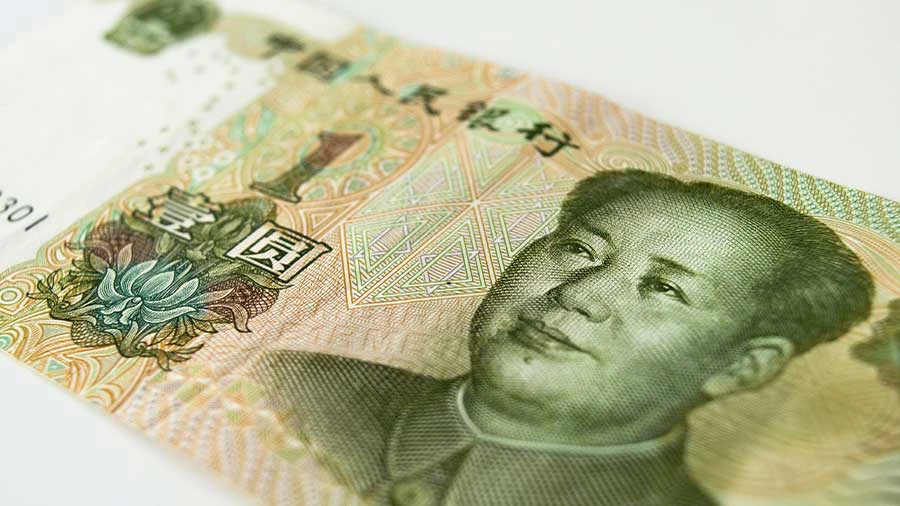The children’s snacks industry in China has transformed over the years in keeping with the pace of economic growth. As China’s middle class expands and parents prioritize the health and nutrition of their children, there is a huge demand for high-quality, innovative, and convenient snacks.
In this article, we provide an overview of China's children snacks industry, discuss the regulation on the production of children snacks, and highlight investment prospects for foreign enterprises seeking to enter this market.
What constitutes China’s children snacks industry?
Snacks are defined as food items consumed apart from regular meals, serving the purpose of supplementing nutrition, facilitating relaxation and leisure, and fostering a pleasant mood. Specifically, children’s snacks are food products specifically formulated and intended for consumption by children aged 3 to 12. The notable distinction between children’s snacks and general snacks primarily lies in the distinct requirements pertaining to nutrition, health, and safety aspects.Growing market size of children’s snacks in China
According to the Children Snacks Market Survey White Paper, the current size of China's children’s snacks market represents approximately one-tenth of the overall snacks market in the country. In 2019, the overall Chinese snacks market reached an astounding valuation of RMB 571.3 billion (US$79.23 billion), with a consistent annual growth rate surpassing 6 percent. It is noteworthy that by 2020, the overall snacks market had surpassed the remarkable milestone of RMB 600 billion (US$83.22 billion).Projections for the period spanning from 2019 to 2023 indicate that the children’s snacks market in China is expected to undergo steady expansion. The compound annual growth rate (CAGR) for this sector is estimated to range between 10 percent and 15 percent. Consequently, the children’s snacks market is poised to emerge as a significant catalyst for growth within the broader snacks industry.
Parental preferences guide snack consumption, focus on nutritional value
In accordance with the Chinese Dietary Guidelines (2022), it has been observed that the prevalence of overweight and obesity among children aged 6 and below, as well as adolescents aged 6-17, stands at 10.4 percent and 19.0 percent, respectively. These statistics underscore a pressing concern regarding excessive energy intake and inadequate consumption of vital micronutrients, thus highlighting the significance of addressing nutrition-related health issues. As a result, parents have become increasingly cautious and meticulous in their approach to purchasing children’s snacks.A recent survey demonstrates that over half of Chinese parents actively engage in thorough decision-making processes when selecting snacks for their children. In addition to consulting guides and scrutinizing ingredient lists, they also personally evaluate the texture and flavor of the snacks. Notably, the primary focus for 68 percent of young parents when purchasing children’s snacks is centered around health and nutrition.
Furthermore, research reveals that when faced with multiple options within the same snack category, Chinese parents exhibit a preference for products that incorporate additional nutritional ingredients. Among these added components, trace elements attract the highest attention, accounting for 70 percent of responses. Additionally, the presence of dietary fiber is a consideration for 56 percent of parents, while 46 percent of parents seek snacks with added probiotics and prebiotics, which aid in regulating the baby's gastrointestinal system and facilitating nutrient digestion and absorption.
Selling to the Chinese market: Key considerations
IP and brand consciousness
The integration of intellectual property (IP) is a notable trend in the children’s snacks industry. Investors can leverage cultural IPs strategically to develop new products and gain competitive advantages.This approach brings several benefits:
- Brand differentiation and personalization: Collaborations with popular animation and cartoon IPs enable brands to create unique product images and captivating stories, attracting consumer attention, and establishing strong brand recognition.
- Emotional connection with consumers: By leveraging well-known IP characters, children’s snack brands can foster an emotional bond with consumers, inspiring their desire to purchase.
- Interactive experiences and social sharing: Introducing IP-related games, parent-child activities, and other interactive elements enhance consumer engagement, making the products more enjoyable. Additionally, it boosts the brand's social influence through increased social sharing.
Major China market players
Recognizing the burgeoning potential of the children’s snacks market, an increasing number of food manufacturers are entering this highly competitive industry. Established snack industry giants, such as Three Squirrels and Bestore, are creating their own children’s brands, while numerous emerging brands like Little Yellow Elephant and BBMVP have carved out niches specializing in children's snacks. Renowned maternity and baby brands like Beingmate and Yeehoo, along with companies leveraging use of popular animation IP, such as Disney and Peppa Pig, are also significant players in this domain.Success of foreign brands
It is worth highlighting the notable success of foreign brands in the Chinese market, which have garnered significant appeal among young parents. As demonstrated in the 2022 Online Market Analysis Report for Baby Food, the European brand Little Freddie maintained its position as the leading brand in the baby food category during the first half of 2022. With sales revenue amounting to 220 million yuan and a market share of 16.4 percent on the Tmall and Taobao platforms, Little Freddie showcased exceptional performance.
Additionally, in the rankings of e-commerce baby food sales during the first half of 2019, foreign brands Gerber (subsidiary of Nestlé) and US food processing giant Heinz secured the first and second positions, respectively. These accomplishments underscore the robust vitality and promising growth prospects that foreign brands hold within the Chinese market.
|
Key Market Players in China’s Children’s Snacks Industry |
|
| Startups |
|
| Traditional snack giants |
|
| Maternity and baby enterprises |
|
| Foreign brands |
|
| IP branding |
|
Popularity of imported products
From January to November 2022, the import value of food in China surged to US$188.03 billion. Notably, research indicates that imported snacks constitute a significant portion, exceeding 50 percent, of the total import food consumption. Furthermore, the children snacks industry in China is projected to surpass RMB 300 billion (US$41.61 billion) in market size by 2027.This projection underscores the immense growth potential within the industry. As the children snacks market in China continues to expand, it presents abundant opportunities for businesses to capitalize on this upward trajectory and tap into the vast potential it offers.
Also, driven by the ongoing growth of per capita income, Chinese consumers have exhibited a heightened inclination towards purchasing imported food, demonstrating a growing readiness to pay for premium-quality products. In this regard, the market potential for imported children’s snacks in China is particularly noteworthy, as an increasing number of consumers prioritize the acquisition of high-quality food options for their children.
Product categories
The Research on the Current Development Status and Investment Prospects of China's Children Snacks Industry (2023-2030) sheds light on product categories within the market. With evolving consumption habits and lifestyle changes among children, the assortment of children’s snacks continues to expand and innovate. Initially dominated by traditional confections like candies and biscuits, the children’s snacks category now encompasses a wide array of options, including seaweed, meat sausage, fruit strips, cream puffs, cheese, and baby melts.China government regulations and food safety
The China Children's Development Outline (2021-2030) underscores the imperative of reinforcing food education, nutrition and health education, and dietary guidance for children. In March 2023, the China Subsidiary Food Circulation Association established the Food Education and Health Industry Committee. It is the first nationwide organization to oversee China’s children’s food industry and aims to establish a health-oriented approach, promoting children's physical well-being.Notably, China took significant steps in this direction as early as June 2020 with the introduction and implementation of the General Requirements for Children Snacks group standard. This milestone marked the country's inaugural standard specifically tailored for children’s snacks. The standard provided explicit guidelines pertaining to ingredients, sensory attributes, nutritional components, microbiological indicators, and food additives for children snacks.
Subsequently, in 2022, industry standards like the General Requirements for Children's Jelly, Candy, and Chocolate were introduced, further delineating the standards for children’s snacks by specialty within specific product categories.
However, it is essential to acknowledge that these standards currently remain voluntary rather than mandatory. Consequently, a gap persists in their implementation. It is anticipated that in forthcoming years, China will release mandatory regulations pertaining to children's diets and food produce.
Foreign investment access
Foreign enterprises may also consider allocating some of their production capacity to China or building a new brand from scratch.According to the latest Special Administrative Measures (Negative List) for Foreign Investment Access (2021 Edition), there are no special restrictions for foreign investment into the children’s snacks manufacturing sector. That is to say, foreign investors will be on equal playground with domestic players.
Some allied sectors are even encouraged for foreign investment. For example, according to the latest Catalogue of Encouraged Industries for Foreign Investment (2022 Version), foreign investors are specially encouraged to invest in following sectors related to manufacturing of children’s snacks:
- Development and production of infant supplementary snacks.
- Development and production of bakery products (including chocolates and related products using natural cocoa beans), convenience snacks, ice cream, and related ingredients.
- Production of cheese, candies, chewing gum, preserved fruits, and yogurt.
- Development and manufacturing of new equipment for agricultural product processing and storage, including equipment for fresh and dried fruit preservation, grading, packaging, and drying.
- Development and production of aseptic liquid food packaging materials.
- Development and production of natural food additives and new technologies for natural flavors.
Key takeaways
The children’s snacks industry in China caters to a fast-growing market. With more emphasis on food safety and nutrition, parents have become increasingly conscious of the snacks they provide to their children. This has fueled the demand for high-quality, healthy, and innovative snack options.Successfully navigating this sector requires businesses to identify their target audience, select suitable products, analyze market preferences, and devise effective solutions to meet children's unique needs. Adaptation to the evolving IP trend to be attractive in the market, provision of healthy and innovative product offerings, and establishing strong brand identities are other key considerations to position companies for success in this dynamic market.









